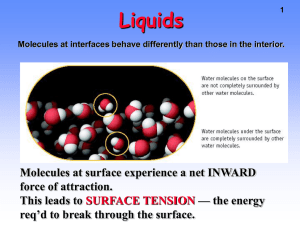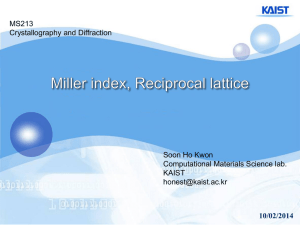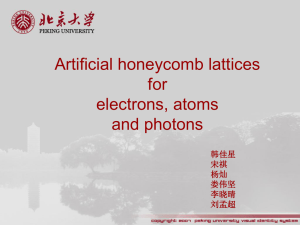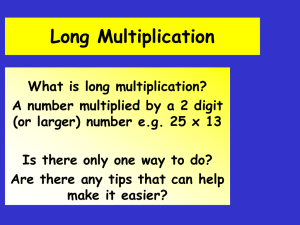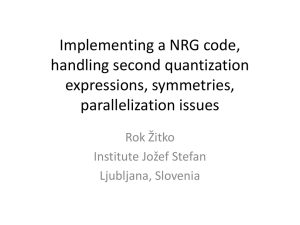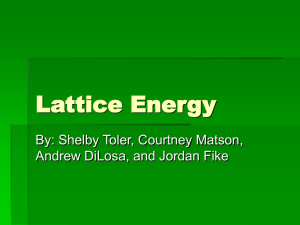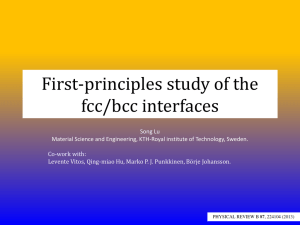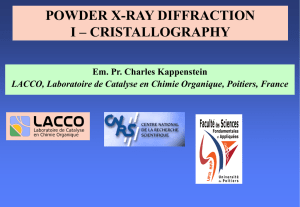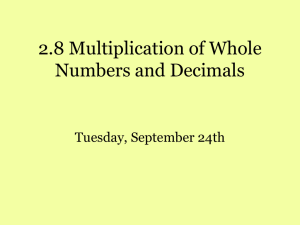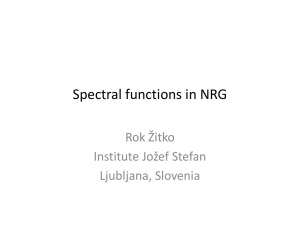in The LDA+DMFT approach to strongly correlated
advertisement
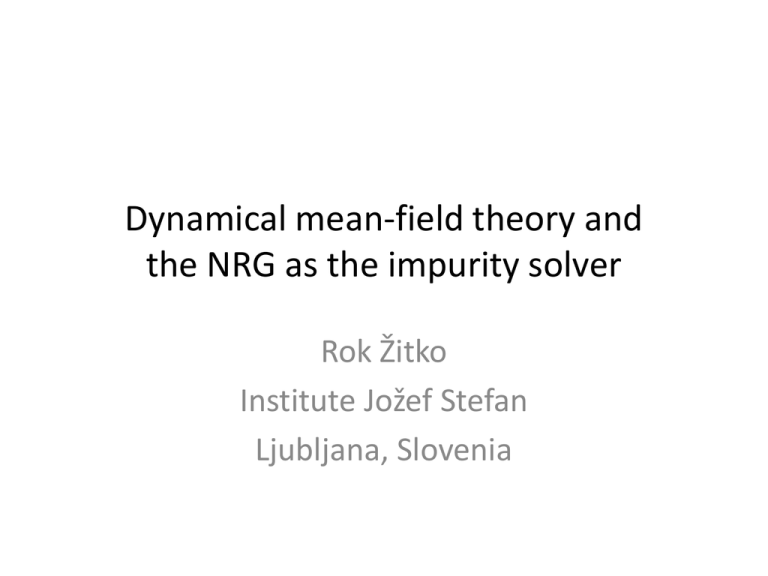
Dynamical mean-field theory and the NRG as the impurity solver Rok Žitko Institute Jožef Stefan Ljubljana, Slovenia DMFT • Goal: study and explain lattice systems of strongly correlated electron systems. • Approximation: local self-energy S • Dynamical: on-site quantum fluctuations treated exactly • Pro: tractable (reduction to an effective quantum impurity problem subject to self-consistency condition) • Con: non-local correlations treated at the static mean-field level Infinite-D limit See, for example, D. Vollhardt in The LDA+DMFT approach to strongly correlated materials, Eva Pavarini, Erik Koch, Dieter Vollhardt, and Alexander Lichtenstein (Eds.), 2011 Infinite-D limit Derivation of the DMFT equations by cavity method: • write the partition function as an integral over Grassman variables • integrate out all fermions except those at the chosen single site • split the effective action • take the D to infinity limit to simplify the expression • result: self-consistency equation Georges et al., RMP 1996 Hubbard ⇒ SIAM G(w)=-Im[ D(w+id) ] hybridization plays the role of the Weiss field Bethe lattice Re Im Hypercubic lattice 3D cubic lattice 2D cubic lattice 1D cubic lattice (i.e., chain) Flat band Achieving convergence: self-consistency constraint viewed as a system of equations DMFT step: Self-consistency: Linear mixing (parameter α in [0:1]): Broyden method F(m)=F[ V(m) ] Newton-Raphson method: Broyden update: Note: can also be used to control the chemical potential in fixed occupancy calculations. R. Žitko, PRB 80, 125125 (2009). Recent improvements in NRG • DM-NRG, CFS, FDM algorithms ⇒ more reliable spectral functions, even at finite T • discretization scheme with reduced artifacts ⇒ possibility for improved energy resolution NRG vs. CT-QMC • NRG: extremely fast for single-impurity problems • NRG: access to arbitrarily low temperature scales, but decent results even at high T (despite claims to the contrary!) • NRG: spectral functions directly on the real-frequency axis, no analytic continuation necessary • NRG: any local Hamiltonian can be used, no minus sign problem • NRG: efficient use of symmetries • CT-QMC: (numerically) exact • CT-QMC: can handle multi-orbital problems (even 7-orbital flevel electrons) Mott-Hubbard phase transition U/W U U>>W W W DMFT prediction U»W non-correlated metal U»0 W m Kotliar, Vollhardt Mott insulator Bulla, 1999, Bulla et al. 2001. k-resolved spectral functions Z quasiparticle renormalization factor Momentum distribution function A(k,w=0) 2D cubic lattice DOS: Caveat: obviously, DMFT is not a good approximation for 2D problems. But 2D cubic lattice is nice for plotting... Ordered phases • Ferromagnetism: break spin symmetry (i.e., add spin index s, use QSZ symmetry type) • Superconductivity: introduce Nambu structure, compute both standard G and anomalous G (use SPSU2 symmetry type) • Antiferromagnetism: introduce AB sublattice structure, do double impurity calculation (one for A type, one for B type) Hubbard model: phase diagram Zitzler et al. High-resolution spectral functions? Hubbard model on the Bethe lattice, PM phase inner band-edge features See also DMRG study, Karski, Raas, Uhrig, PRB 72, 113110 (2005). Z. Osolin, RZ, 2013 Hubbard model on the Bethe lattice, AFM phase spin-polaron structure (“string-states”) Thermodynamics Note: Bethe lattice: Transport in DMFT Vertex corrections drop out, because S is local, and vk and ek have different parity. X. Deng, J. Mravlje, R. Zitko, M. Ferrero, G. Kotliar, A. Georges, PRL 2013. qmc nrg Other applications • • • • • Hubbard (SC, CO) two-orbital Hubbard model Hubbard-Holstein model (near half-filling) Kondo lattice model (PM, FM, AFM, SC phases) Periodic Anderson model (PAM), correlated PAM
